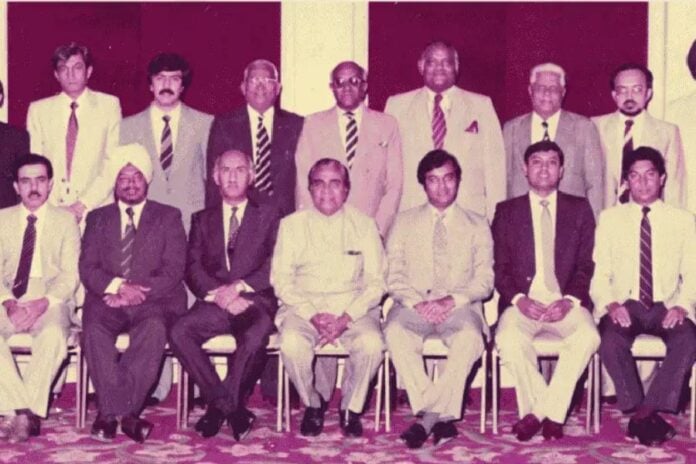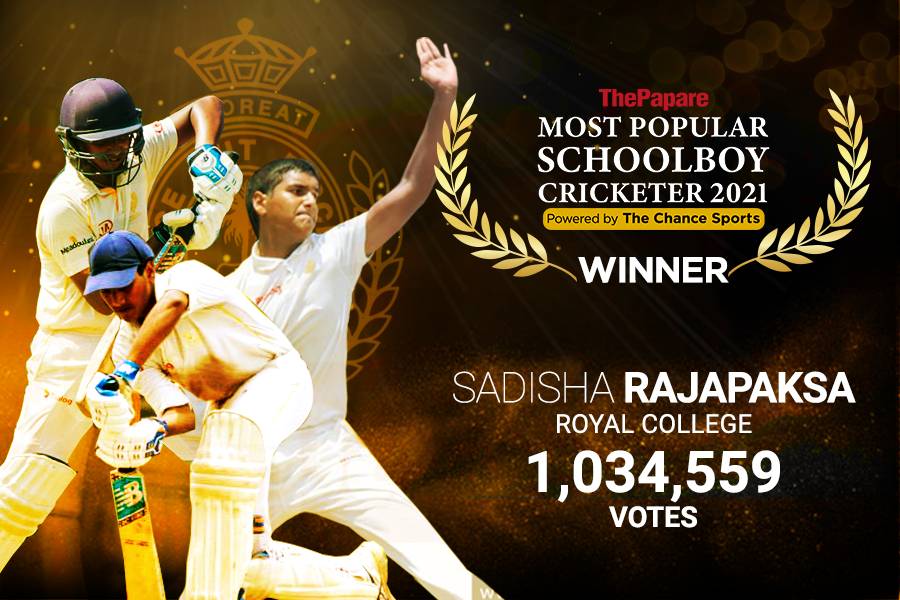When the Asian Cricket Council was born in September 1983, its brief was simple — to organise, promote and grow the game across the region. Four decades later, the ACC has turned into a sturdy middle-order batsman, carrying the innings with grit and flair, running tournaments for men, women and development squads while batting for the interests of cricket’s emerging nations. Remarkably, five of its members have graduated to full ICC membership, a feather in Asia’s cap no other region can flaunt.
Many of the men who walked out to the middle at that inaugural meeting have long departed, but a few stalwarts are still in the pavilion of life, actively steering the game. Among them is the great Nuzki Mohammad, pictured here seated second from right. Two chairs along sits Gamini Dissanayake, one of the founding fathers of the ACC, who was elected Vice-President under India’s Cabinet Minister N.K.P. Salve.
>>Future of Sri Lankan cricket in safe hands, says Mathews<<
Dissanayake was a visionary captain off the field, rendering yeoman service. It was on his watch as Sri Lanka board chief that the island earned its coveted Test cap in 1981. Also in the frame were giants of the game: Air Marshal Noor Ahmed of Pakistan and Abdul Rahman Bukhatir of the UAE, the patron who bankrolled Sharjah into a cricketing Mecca.
The Indian contingent was led by heavyweights Jagmohan Dalmiya, S.K. Wankhede, M.A. Chidambaram and I.S. Bindra — all of whom apart from Dalmiya have stadiums named after them in Bombay, Madras and Mohali, ensuring their legacy was literally set in stone.
Beyond staging fixtures and nurturing talent, the ACC set its sights on breaking the iron grip of England and Australia, who still wielded veto power at the ICC. Thanks to Asia’s united front, that old order was bowled out. The Council also swung the World Cup’s pendulum eastward, prising it from England’s monopoly after the first three editions in 1975, 1979 and 1983.
What followed was an Asian dominance: India, Pakistan and Sri Lanka all lifting both the 50-over and T20 World Cups, while Bangladesh and Afghanistan in more recent years have proved they are no pushovers, capable of bloodying bigger noses.
>>New cycle, new faces: Sri Lanka ready to roar<<
India today call the shots as cricket’s economic powerhouse, yet politics has kept their rivalry with Pakistan confined to ACC and ICC events. That rarity factor makes their clashes white-hot box-office, often scheduled in the same group to guarantee at least two encounters.
Organisers quietly dream of a blockbuster India–Pakistan final, but time and again Sri Lanka have played the role of party-poopers, springing surprises to knock out one of the big two. That, after all, is the beauty of sport, its glorious unpredictability.
The founding fathers of the ACC would no doubt be chuffed with how the body has gone from strength to strength. From shaky beginnings, it has anchored the innings and today the game is richer for its presence.















